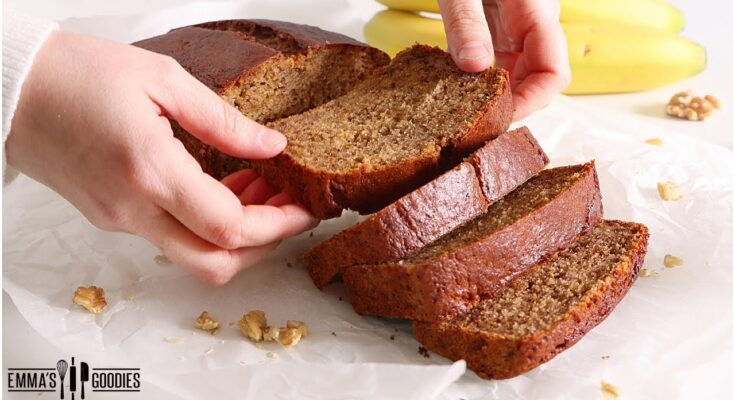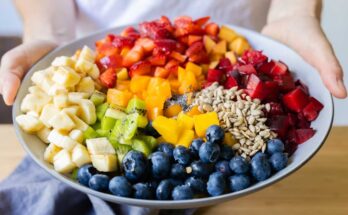Best Homemade Bread Recipe: There’s something deeply satisfying about baking your own bread. It fills your kitchen with a comforting, warm aroma that no store-bought loaf can match. Making bread at home isn’t just about taste—it’s about the experience. You’re not just baking; you’re crafting. Whether you’re a beginner or an experienced baker, creating your own loaf from scratch is empowering and rewarding.
Homemade bread allows you to control exactly what goes into it. No more preservatives, artificial flavors, or unnecessary sugars. Just pure, wholesome ingredients that you can trust. And let’s not forget the cost savings—flour, yeast, and water are significantly cheaper than a quality bakery loaf. So, you get better bread for less money.
Even beyond the financial benefits, there’s a unique joy in kneading dough, watching it rise, and finally slicing into a freshly baked loaf. It becomes a comforting ritual, one that connects us to generations past and gives us a real sense of accomplishment.
Benefits of Homemade vs Store-Bought Bread
Store-bought bread might be convenient, but it comes with trade-offs. Most commercial breads contain additives to prolong shelf life. They often lack the rich, hearty flavor of fresh bread and can be overly processed, stripping away nutrients.
In contrast, homemade bread is more nutritious. You can choose whole grain flours, add seeds or nuts, and skip the sugar entirely if you want to. The texture is also superior—soft on the inside with a beautifully crisp crust on the outside.
And let’s talk freshness. That loaf you pull out of your oven is as fresh as it gets. Slice it warm and serve it with a pat of butter or jam—pure heaven. In the end, homemade bread isn’t just better. It’s real food, made by your hands, for your home.
Ingredients You Need
Basic Ingredients for White Bread
The beauty of a classic white bread lies in its simplicity. Here’s what you’ll need:
- 3 ¾ cups (450g) all-purpose flour or bread flour – Bread flour gives a chewier texture.
- 1 ½ teaspoons salt – Balances the flavor.
- 2 teaspoons sugar or honey – Feeds the yeast and adds slight sweetness.
- 1 packet (2 ¼ tsp) active dry yeast – The leavening agent.
- 1 ¼ cups warm water (100–110°F) – Activates the yeast.
- 2 tablespoons olive oil or melted butter – For richness and softness.
This simple list creates a beautiful base loaf—soft, airy, and full of flavor. Make sure to measure your flour properly: spoon it into the cup and level it off with a knife. Too much flour can make your bread dense.
Optional Ingredients for Flavor and Texture
Once you master the basics, it’s fun to experiment. Here are some ingredients you can add to customize your bread:
- Herbs (rosemary, thyme, oregano) – Add for aroma and depth.
- Cheese (cheddar, parmesan) – Mix into the dough or sprinkle on top.
- Seeds (chia, flax, sesame, sunflower) – For crunch and nutrition.
- Garlic or onion powder – Add savory complexity.
- Dried fruit (raisins, cranberries) – For a hint of sweetness.
You can also substitute part of the flour with whole wheat for a heartier loaf, or use milk instead of water for a softer texture. Your kitchen, your rules.
Tools and Equipment
Must-Have Tools for Bread Baking
You don’t need fancy gadgets to start baking bread, but a few basic tools will make your life easier:
- Mixing Bowl – Large enough to handle your dough as it rises.
- Measuring Cups & Spoons – For accuracy.
- Wooden Spoon or Dough Hook – Useful for mixing the dough.
- Loaf Pan or Baking Sheet – Depending on the type of bread.
- Oven – Obviously essential!
A digital kitchen scale is also great for precision. Many pro bakers prefer weighing their ingredients over measuring by volume.
Useful Extras That Make Baking Easier
As you get more into baking, some extra tools can enhance your experience:
- Bench Scraper – Handy for handling sticky dough.
- Dough Whisk – Ideal for mixing wet, sticky doughs.
- Proofing Basket (Banneton) – Helps your bread hold shape.
- Dutch Oven – Gives amazing crusty artisan-style loaves.
- Thermometer – To check water temp and internal doneness (190–210°F).
Having the right tools can make bread making smoother and more enjoyable, especially as you begin experimenting with different types of dough and recipes.
Step-by-Step Bread Making Process
Step 1: Preparing the Dough
This is where the magic begins. In a large bowl, dissolve sugar in warm water, then sprinkle the yeast on top. Let it sit for 5–10 minutes until it’s frothy. That’s your yeast waking up!
Next, stir in the oil or butter, salt, and flour. Add the flour gradually and mix until a shaggy dough forms. Once it’s too thick to stir, transfer to a floured surface and knead by hand for about 8–10 minutes, or use a stand mixer with a dough hook for 5–6 minutes.
The dough should become smooth and elastic. If it’s too sticky, sprinkle in a little more flour—but don’t overdo it, or your bread might turn out tough.
Step 2: First Rise – Letting the Dough Rest
Once your dough is smooth and elastic, it’s time to let it rest and rise—a step called “proofing.” Place the dough in a lightly oiled bowl, turning it once to coat the top. Cover it with a damp kitchen towel or plastic wrap and let it rise in a warm, draft-free area.
Depending on your room temperature, this can take anywhere from 1 to 2 hours. The dough should roughly double in size. If you’re not sure, poke it gently with your finger—if the dent stays, it’s ready.
This step is crucial because it gives the yeast time to ferment, which produces gas that makes the dough rise. That fermentation also adds flavor. Skipping or rushing this step can lead to flat or dense bread, so patience is key here.
Step 3: Shaping the Dough
Once the dough has risen, punch it down gently to release the gas. Turn it out onto a lightly floured surface and knead it for just a minute to bring it back into shape.
Then comes the fun part—shaping. If you’re using a loaf pan, form the dough into a rectangle, fold the sides in, then roll it tightly into a log and tuck the ends underneath. For freeform loaves, shape it into a round boule or rustic oval.
Place your shaped dough into a greased loaf pan or on a parchment-lined baking sheet. Cover it again with a towel and let it rise for a second time.
Step 4: Second Rise – Final Proof
This rise is shorter, usually about 30 to 45 minutes. During this time, the dough will puff up and become lighter. You don’t want it to over-proof or it could collapse while baking. A good test is the “poke test” again—press a finger gently into the dough. If it springs back slowly and partially, it’s perfect.
This final proof helps create that soft, airy texture inside the bread and allows the dough to relax into its final shape.
Step 5: Baking the Bread
Preheat your oven to 375°F (190°C). If you want an extra crusty loaf, place a pan of hot water on the bottom rack to create steam—this is especially helpful for artisan-style breads.
Bake the bread for 30–35 minutes, or until it’s golden brown and sounds hollow when tapped on the bottom. You can also use a kitchen thermometer to check—it should read at least 190°F in the center.
Once it’s done, remove the bread from the oven and let it cool in the pan for 10 minutes, then transfer it to a wire rack. Resist the urge to cut into it right away. Letting it cool completely helps set the crumb and makes slicing easier.
Tips for Perfect Bread Every Time
Troubleshooting Common Issues
Even experienced bakers run into issues. Here’s how to tackle some of the most common problems:
- Dense or Heavy Bread: This could mean the dough didn’t rise long enough, or you used too much flour. Always let it rise fully and measure ingredients accurately.
- Cracked Crust: The dough may have dried out during proofing. Always cover it with a damp cloth or wrap.
- Bread Didn’t Rise: Check your yeast—it may be expired. Also, make sure your water isn’t too hot or too cold.
- Uneven Texture: Under-kneading or poor shaping can lead to big air pockets. Take your time with kneading and shaping.
How to Store Your Bread
Homemade bread doesn’t have preservatives, so it won’t last as long as store-bought. Here’s how to store it for maximum freshness:
- At Room Temperature: Wrap it in a clean towel or store in a bread box for up to 3 days.
- In the Freezer: Slice the loaf, wrap the slices in foil or plastic, then store in a freezer-safe bag. Toast or reheat as needed.
- Avoid the Fridge: Refrigeration can dry bread out faster due to the low humidity.
To refresh slightly stale bread, sprinkle it with water and warm it in the oven at 350°F for 5–10 minutes.
FAQs about Best Homemade Bread Recipe
Q1. What is the secret to making fluffy homemade bread?
The key to fluffy bread is proper kneading and proofing. Kneading builds gluten, while allowing the dough to rise adequately gives it that soft, airy texture.
Q2. How long should I let the bread dough rise?
Let the dough rise for at least 1 to 2 hours, or until it doubles in size. This helps develop flavor and texture. For an even better taste, consider a second rise after shaping.
Q3. Can I use all-purpose flour instead of bread flour?
Yes, you can use all-purpose flour, but bread flour has more protein, which gives the bread better structure and chewiness.
Q4. Why is my homemade bread dense and heavy?
Dense bread usually means the dough wasn’t kneaded enough, didn’t rise long enough, or the yeast was expired. Make sure to follow proofing times closely and use fresh yeast.
Q5. Do I need a stand mixer to make bread?
Not at all. While a stand mixer makes kneading easier, you can knead by hand with great results. It just takes a little more time and elbow grease.
Q6. How do I store homemade bread to keep it fresh?
Store bread in an airtight container or a bread box at room temperature for up to 3 days. For longer storage, wrap it well and freeze for up to 2 months.
Q7. Can I add herbs or cheese to this bread recipe?
Absolutely! Customize your bread with herbs like rosemary, or mix in shredded cheese for extra flavor. Just fold them in during the final kneading stage.
Q8. Is it possible to make this recipe gluten-free?
Yes, but you’ll need to use a gluten-free flour blend and possibly adjust the liquids. Gluten-free bread requires different handling, so follow a tested GF recipe for best results.
Q9. Can I make the dough ahead of time?
Yes, you can refrigerate the dough overnight for a slow rise. Just bring it to room temperature before baking the next day.
Q10. What’s the best temperature to bake homemade bread?
Most basic bread recipes bake well at 375°F to 400°F (190°C to 200°C) until golden brown and hollow-sounding when tapped.
Conclusion
Making homemade bread is more than just following a recipe—it’s a rewarding experience that taps into a primal, nourishing tradition. With just a few basic ingredients and a bit of patience, you can produce a loaf that’s tastier, healthier, and more satisfying than anything you’ll find at the store.
Once you master this simple recipe, you’ll find yourself experimenting with herbs, whole grains, and even sweet additions like cinnamon or raisins. Each loaf tells a story and adds a personal touch to your table.
So next time you’re craving the comfort of warm, fresh bread, skip the store run. Head to your kitchen, roll up your sleeves, and bake something unforgettable.



